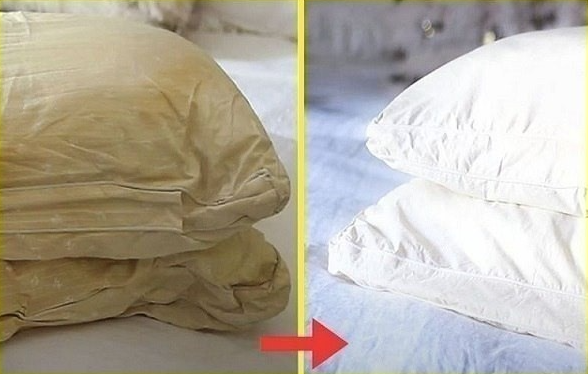Skin cysts and abscesses represent frequent medical issues that impact individuals across various age groups. These formations often appear concerning at first glance, yet they remain generally non-cancerous and responsive to appropriate healthcare interventions. The illustration presented earlier depicts a skilled technique executed by a medical expert, showcasing the extraction of a substantial sebaceous cyst or abscess located on the posterior region of a patient’s neck. This discussion delves into the nature of sebaceous cysts, the reasons behind their development, and the methods employed by professionals to eliminate them securely.
Defining a Sebaceous Cyst
A sebaceous cyst, alternatively referred to as an epidermoid cyst or epidermal inclusion cyst, consists of a sealed pouch that emerges beneath the skin surface. This structure arises when the sebaceous gland or hair follicle experiences obstruction, leading to the accumulation of sebum—a dense, oily material generated naturally within the body—within the enclosed space. Gradually, this accumulation forms a protrusion that varies in dimensions from a tiny seed to a sizable sphere.
Typical locations for these cysts to manifest encompass:
- The scalp
- Neck
- Face
- Back
- Shoulders
Sebaceous cysts generally pose no threat, although they may generate discomfort or succumb to infection when bacteria infiltrate the obstructed gland.
Factors Contributing to Development and Associated Risks
Sebaceous cysts emerge due to multiple influences, such as:
- Obstructed oil glands or hair follicles
- Skin damage from a scrape or slight wound
- Inherited disorders including Gardner’s syndrome or basal cell nevus syndrome
- Fluctuations in hormones that elevate oil secretion
- Inadequate cleanliness or profuse perspiration
People possessing oily skin types show greater susceptibility to forming these cysts. Males demonstrate a higher statistical tendency to encounter more substantial sebaceous cysts compared to females.
Indicators and Manifestations
A sebaceous cyst might first present as a minor, non-tender elevation below the skin layer. As time progresses, it expands and gains prominence. Frequent manifestations involve:
- A circular, even protuberance under the skin
- A tiny dark spot or opening at the lump’s midpoint
- Unpleasant-smelling, curd-like, or pale yellow fluid if the cyst ruptures
- Erythema, sensitivity, and inflammation upon infection
Upon infection, the cyst frequently evolves into an abscess, brimming with pus and swollen surroundings, necessitating prompt medical intervention.
Professional Management and Extraction
Minor cysts may require no intervention, whereas larger or contaminated cysts demand attention from a qualified practitioner. The visual example portrays a brief operative process in which a physician, equipped with sterile hand coverings, carefully presses and extracts the cyst material via a limited cut. This approach incorporates several vital phases:
- Sanitizing the site with an antimicrobial agent to avert contamination.
- Administering local numbing agent to desensitize the area and reduce unease.
- Creating a modest opening above the cyst.
- Evacuating the cyst by expelling its contents, which frequently display a viscous, pale, or golden hue.
- Excising the cyst envelope (the lining or shell) to avoid reappearance.
- Purifying and bandaging the incision appropriately.
The full operation typically concludes in under 30 minutes and delivers instant alleviation from buildupiness and soreness.
Post-Procedure Care and Recovery
Following cyst extraction, diligent wound maintenance proves crucial for healing. Individuals receive guidance to:
- Preserve the wound spotless and moisture-free.
- Spread recommended antimicrobial cream.
- Refrain from contacting or compressing the recovering zone.
- Attend scheduled check-ups when required.
The majority of cases achieve full recovery in 1–2 weeks. Subtle redness, puffiness, or sensitivity might linger briefly yet generally diminishes rapidly.
Potential Issues
Cyst extraction stands as a secure method, though rare difficulties may surface:
- Contamination at the cut location
- Marking (typically slight with proficient operative skills)
- Reemergence if the cyst lining remains incompletely excised
Selecting a seasoned medical specialist significantly lowers these hazards.
Strategies for Avoidance
Certain cysts evade prevention, yet these measures can diminish reoccurrence chances:
- Uphold thorough cleanliness and perform routine exfoliation.
- Steer clear of pressing or tampering with cysts or blemishes.
- Employ skincare items that avoid pore blockage.
- Address acne and oily skin concerns without delay.
Indicators for Medical Consultation
Pursue professional evaluation when:
- The elevation enlarges swiftly or turns sore.
- Pus drains or an offensive scent emerges.
- The skin reddens, heats, or sensitizes.
- The cyst reappears post earlier extraction.
Prompt identification and management avert issues and accelerate restoration.
Final Thoughts
Sebaceous cysts and abscesses constitute prevalent yet controllable dermal ailments. Expert extraction, as illustrated in the visual, guarantees a protected and successful resolution while curtailing reappearance dangers. Sustaining excellent skincare routines and obtaining timely professional assistance remain vital for vibrant, unblemished skin.
Grasping the origins, indicators, and management of sebaceous cysts empowers people to arrive at educated choices regarding their dermal well-being and halt small concerns from escalating into grave infections.






